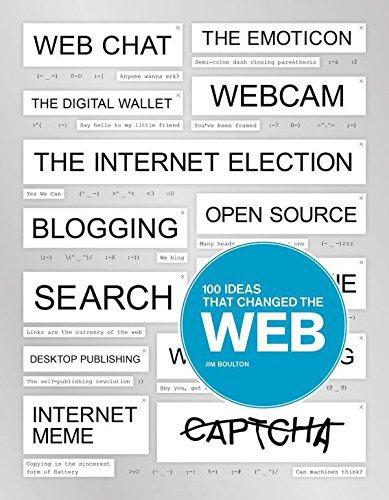100 Ideas That Changed the Web
by Maria Popova
From the mouse to the GIF, by way of the long tail and technology’s forgotten female pioneers.
 In his now-iconic 1945 essay “As We May Think,” Vannevar Bush considered the problem of organizing humanity’s knowledge, which he poetically termed “the common record,” in an intelligent way amidst an era of information overload. It was a challenge first addressed a decade earlier by a Belgian idealist named Paul Otlet, whose global knowledge network called the Mundaneum sparked the dawn of the modern information age. But it wasn’t until 1999 that Tim Berners-Lee, who had invented the World Wide Web and launched the first webpage on August 6, 1991, coined the concept of the Semantic Web — a seminal stride toward cultivating wisdom in the age of information, bringing full-circle Otlet’s vision for an intelligent global network of organizing human knowledge. Much like Johannes Gutenberg, who combined a number of existing technologies to invent his revolutionary press, Berners-Lee was simply bringing together disjointed technologies — electronic documents, hypertext, markup, the internet — to create a new paradigm that changed our world at least as much as Gutenberg’s invention. But how, exactly, did we get there?/.../
In his now-iconic 1945 essay “As We May Think,” Vannevar Bush considered the problem of organizing humanity’s knowledge, which he poetically termed “the common record,” in an intelligent way amidst an era of information overload. It was a challenge first addressed a decade earlier by a Belgian idealist named Paul Otlet, whose global knowledge network called the Mundaneum sparked the dawn of the modern information age. But it wasn’t until 1999 that Tim Berners-Lee, who had invented the World Wide Web and launched the first webpage on August 6, 1991, coined the concept of the Semantic Web — a seminal stride toward cultivating wisdom in the age of information, bringing full-circle Otlet’s vision for an intelligent global network of organizing human knowledge. Much like Johannes Gutenberg, who combined a number of existing technologies to invent his revolutionary press, Berners-Lee was simply bringing together disjointed technologies — electronic documents, hypertext, markup, the internet — to create a new paradigm that changed our world at least as much as Gutenberg’s invention. But how, exactly, did we get there?/.../
No comments:
Post a Comment